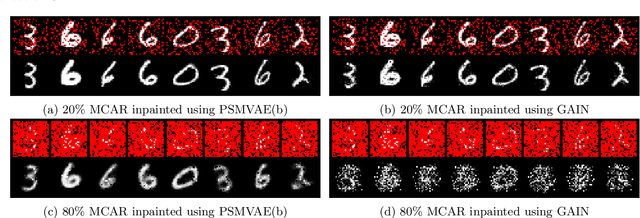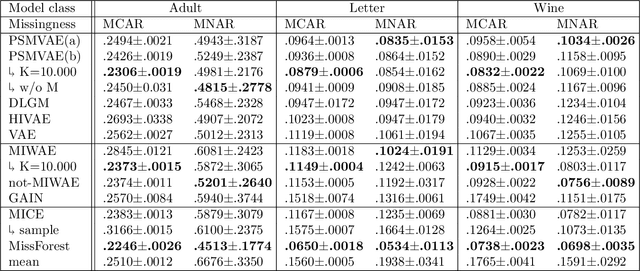Deep Generative Pattern-Set Mixture Models for Nonignorable Missingness
Paper and Code
Mar 05, 2021



We propose a variational autoencoder architecture to model both ignorable and nonignorable missing data using pattern-set mixtures as proposed by Little (1993). Our model explicitly learns to cluster the missing data into missingness pattern sets based on the observed data and missingness masks. Underpinning our approach is the assumption that the data distribution under missingness is probabilistically semi-supervised by samples from the observed data distribution. Our setup trades off the characteristics of ignorable and nonignorable missingness and can thus be applied to data of both types. We evaluate our method on a wide range of data sets with different types of missingness and achieve state-of-the-art imputation performance. Our model outperforms many common imputation algorithms, especially when the amount of missing data is high and the missingness mechanism is nonignorable.
 Add to Chrome
Add to Chrome Add to Firefox
Add to Firefox Add to Edge
Add to Edge